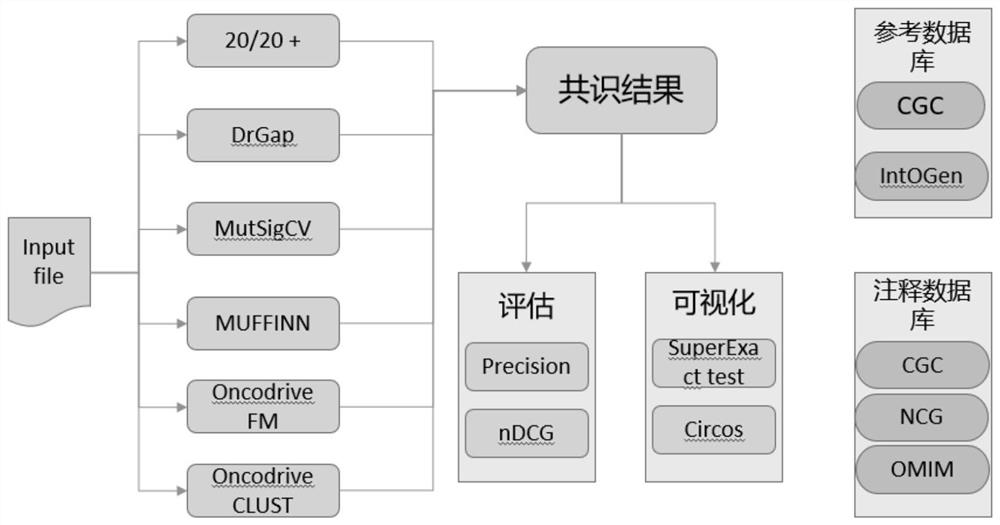Method for identifying cancer driver gene by using consensus prediction result
A technology for driving genes and predicting results, applied in genomics, instrumentation, proteomics, etc., can solve the problems that the integrated results need to be improved and will not give clone growth advantages
- Summary
- Abstract
- Description
- Claims
- Application Information
AI Technical Summary
Problems solved by technology
Method used
Image
Examples
Embodiment Construction
[0043] The technical solutions in the embodiments of the present invention will be clearly and completely described below with reference to the embodiments of the present invention. Obviously, the described embodiments are only a part of the embodiments of the present invention, rather than all the embodiments. Based on the embodiments of the present invention, all other embodiments obtained by those of ordinary skill in the art without creative efforts shall fall within the protection scope of the present invention.
[0044] The present invention designs a web server-based consensus cancer driver gene calling program platform to derive consensus mutation calling results, using six state-of-the-art technologies and complementary prediction strategies, and provides an efficient integrated strategy to achieve robust Consensus results were derived using rank order aggregation" (RRA) and statistical model-based intersection visualization, and consensus mutation calling results were...
PUM
 Login to View More
Login to View More Abstract
Description
Claims
Application Information
 Login to View More
Login to View More - R&D
- Intellectual Property
- Life Sciences
- Materials
- Tech Scout
- Unparalleled Data Quality
- Higher Quality Content
- 60% Fewer Hallucinations
Browse by: Latest US Patents, China's latest patents, Technical Efficacy Thesaurus, Application Domain, Technology Topic, Popular Technical Reports.
© 2025 PatSnap. All rights reserved.Legal|Privacy policy|Modern Slavery Act Transparency Statement|Sitemap|About US| Contact US: help@patsnap.com



